|
Books Should Be Free Loyal Books Free Public Domain Audiobooks & eBook Downloads |
|
|
Books Should Be Free Loyal Books Free Public Domain Audiobooks & eBook Downloads |
|
Fiction |
|---|
|
Book type:
Sort by:
View by:
|
By: James Joyce (1882-1941) | |
|---|---|
 A Portrait of the Artist as a Young Man
A Portrait of the Artist as a Young Man
His family name is derived from a Greek craftsman who created the Labyrinth and designed wings for himself and his son to fly away from the island they were imprisoned in. But Stephen Dedalus, the young hero of James Joyce's first novel, is a young man who rises above his baser instincts and seeks a life devoted to the arts. This quintessential coming of age novel describes the early life of Stephen Dedalus. It is set in Ireland during the nineteenth century which was a time of emerging Irish nationalism and conservative Catholicism... | |
By: Giovanni Boccaccio (1313-1375) | |
|---|---|
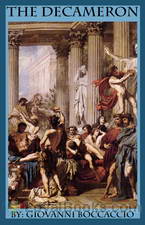 The Decameron
The Decameron
Giovanni Boccaccio’s The Decameron is a collection of novellas or short novels written during the 14th century. There are 100 tales contained in the book which is presented together. The book’s title The Decameron combines the two Greek words “deka” meaning ten and “hemera” meaning day. The title can be literally translated as “ten day,” which is also the time frame in which the stories are told by the 7 young women and 3 young men. In the book, each of the ten persons took their turns to tell stories for a day... | |
By: H. Rider Haggard (1856-1925) | |
|---|---|
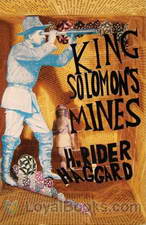 King Solomon's Mines
King Solomon's Mines
King Solomon’s Mines is the story of the leader Allan Quatermain and his adventurous group of followers on their mission to find the lost brother of an aristocrat, Sir Henry Curtis. Considered similar to Robert Louise Stevenson’s novel Treasure Island, Haggard’s book proved to be another must-read adventure novel in the international literary world. The African desert hides underneath its sands myths and legends that lasted for centuries in the minds of the locals. Quatermain has a mysterious map that could lead to the ancient mines of the wise King Solomon... | |
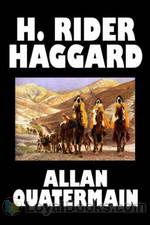 Allan Quatermain
Allan Quatermain
“An Adventurer – He that goes out to meet whatever may come!” This is the credo of Allan Quatermain, the quintessential, swashbuckling protagonist of Allan Quatermain by H. Rider Haggard. Quatermain first makes his appearance as a character in Haggard's most famous bestselling adventure tale, King Solomon's Mines. Published in 1885, this Victorian action novel depicts a group led by Allan Quatermain who travel to a remote region in Africa in search of the missing brother of one of them. It is considered the very first English adventure tale set in what was perhaps disparagingly then called the “Dark Continent... | |
 Heart of the World
Heart of the World
Set in the heart of Central America, the adventure novel accounts an enthralling tale marked by zealous adventure, discovery of a lost civilization, and unconditional love. Published in 1895, Heart of the World presents a fusion of suspense, foreshadowing, legend, unforeseen twists, and endearing characters to create a piece highly valuable in the world of fiction. Narrated by an elderly Ignatio on his deathbed, the novel recounts his great escapade alongside Englishman James Strickland as they venture off in search of a lost civilization... | |
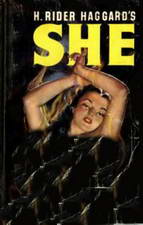 She
She
A timeless classic of fantasy literature, She is recognized as the groundwork for the lost world literary sub- genre. First published serially in The Graphic magazine from 1886 to 1887, the novel has reached critical acclaim with approximately 100 million copies sold and is regarded as one of the best-selling books of all time. Exploring themes of imperialism, lost civilization, female authority and psyche, the novel also serves as a mirror to reflect Victorian issues such as gender and race. ... | |
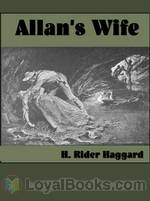 Allan's Wife
Allan's Wife
The story of Allan Quatermain's wife and further adventures of Allan Quatermain. | |
 Allan and the Holy Flower
Allan and the Holy Flower
Further adventures of Allan Quatermain | |
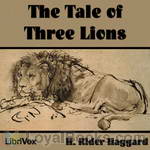 The Tale of Three Lions
The Tale of Three Lions
Taking place in the heart of Africa, “The Tale of Three Lions” is one more thrilling adventure from the eventful life of old hunter Quartermain, the famous hero of “King Solomons Mines”. This time, though there are no bloodthirsty people for the old hunter to deal with, the dangers are no less. He has to face the mighty and fierce King of Animals – the Lion. | |
 Colonel Quaritch, V.C.: A Tale of Country Life
Colonel Quaritch, V.C.: A Tale of Country Life
This is not your typical H. Rider Haggard adventure book yet it is full of mystery and intrigue including a coerced marriage, bigotry, adultery, murder and a buried treasure! This is the tale of an ancient family’s struggles to survive, one woman’s selflessness and another’s evil schemes; Two Gentlemen, two scoundrels and one very underestimated, loyal servant. Listen as the tale unfolds and guess where the treasure is hidden that can save them all! | |
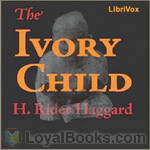 The Ivory Child
The Ivory Child
Allan Quatermain's first adventure with Lord Ragnall. (Introduction by laineyben) | |
 The Wizard
The Wizard
Described by the author, best known for his King Solomon's Mines, as "a tale of victorious faith," this story begins on a Sunday afternoon in an English church. Most of the book, though, is set in Africa, and the adventure story is as engaging as any of Haggard's African tales. What makes this one different is the religious question: What has happened to miracles in the church? Is there any power left in Jesus' promise, "Whoso that believeth in me, the works that I do he shall do also, and whatsoever ye shall ask in my name, that will I do"? | |
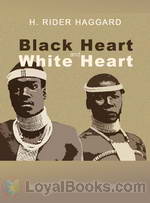 Black Heart and White Heart
Black Heart and White Heart
Black Heart and White Heart, is a story of the courtship, trials and final union of a pair of Zulu lovers in the time of King Cetywayo. (Introduction by H. Rider Haggard) | |
 Eric Brighteyes
Eric Brighteyes
The Saga of Eric Brighteyes is the title of an epic viking novel by H. Rider Haggard, and concerns the adventures of its eponymous principal character in 10th century Iceland. Eric Thorgrimursson (nicknamed 'Brighteyes' for his most notable trait), strives to win the hand of his beloved, Gudruda the Fair. Her father Asmund, a priest of the old Norse gods, opposes the match, thinking Eric a man without prospects. But deadlier by far are the intrigues of Swanhild, Gudruda's half-sister and a sorceress who desires Eric for herself. She persuades the chieftain Ospakar Blacktooth to woo Gudrida, making the two men enemies. Battles, intrigues, and treachery follow. | |
By: Stephen Leacock (1869-1944) | |
|---|---|
 Frenzied Fiction
Frenzied Fiction
From the cave man to Santa Claus; spies, know-it-alls, and journalists: all are fair game for Leacock’s special brand of humor. He touches on the changes time has brought about in the city, education, and work habits. Among the other topics in this work are nature, fishing, gardening, success, and spirits–both of the departed and of the variety Prohibition prohibited. Each chapter of this book is a standalone story and if you love a good laugh, these stories are for you. In me, Leacock’s wit produced the full range of laughter: smiles, chuckles, guffaws, and some uncontrollable giggles. Also, occasionally, I found myself shedding a tear or two. (Review by Debra Lynn) | |
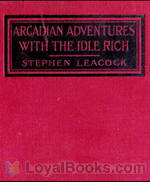 Arcadian Adventures with the Idle Rich
Arcadian Adventures with the Idle Rich
“Arcadian Adventures with the Idle Rich” is a work of humorous fiction by Stephen Leacock first published in 1914. It is the follow-up to his 1912 classic “Sunshine Sketches of a Little Town.” Like that work, it is a sequence of interlocking stories set in one town, but instead of focusing on a small Canadian town in the countryside, it is set in a major American metropolis and its characters are the upper crust of society. Although currently not as well-known as the earlier book, “Arcadian Adventures” was extremely popular in North America at the time of its publication and for a while was considered the greater success... | |
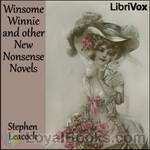 Winsome Winnie and other New Nonsense Novels
Winsome Winnie and other New Nonsense Novels
Eight silly stories by Canadian humourist Stephen Leacock. | |
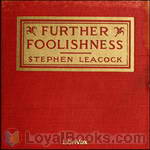 Further Foolishness
Further Foolishness
Seventeen goofy stories and essays by Canadian humourist Stephen Leacock. "Professor Leacock has made more people laugh with the written word than any other living author. One may say he is one of the greatest jesters, the greatest humorist of the age." – A. P. Herbert (Introduction by TriciaG & Wikipedia) | |
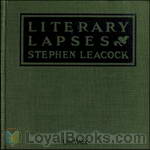 Literary Lapses
Literary Lapses
Short sketches relating the humourous side of life in 1910. "Professor Leacock has made more people laugh with the written word than any other living author. One may say he is one of the greatest jesters, the greatest humorist of the age." – A. P. Herbert | |
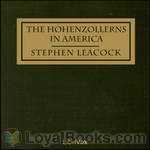 The Hohenzollerns in America
The Hohenzollerns in America
More stories by Canadian Stephen Leacock. Some of these stories carry over characters introduced in Further Foolishness. Some stories are humourous; some are more thoughtful. It helps to be familiar with WWI-era European politics to catch much of the humour. Full title: The Hohenzollerns in America With the Bolsheviks in Berlin and Other Impossibilities | |
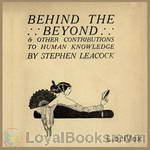 Behind the Beyond
Behind the Beyond
A collection containing a parody on Problem Plays, as well as humorous anecdotes from Canadian humourist Stephen Leacock. | |
 Moonbeams from the Larger Lunacy
Moonbeams from the Larger Lunacy
Humorous, ironic, and sometimes cynical observations of life in 1915 from Canadian humourist Stephen Leacock. | |
By: George MacDonald (1824-1905) | |
|---|---|
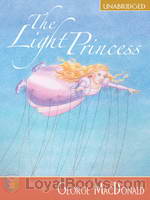 The Light Princess
The Light Princess
A king and queen are in despair. After years of marriage, they are yet to be blessed with a child. Finally a lovely daughter is born to them. They plan a grand christening ceremony for the baby, but as destiny would have it, they forget to invite the nastiest lady in the kingdom, who also happens to be the king's sister, the evil Princess Makemnoit. Now if all that seems distinctly familiar to you, it was meant to! Using the Sleeping Beauty/Briar Rose fairytale as a starting point, Scottish writer George MacDonald creates a story that's even more enchanting and gives it a nice little twist... | |
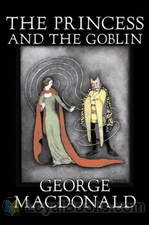 The Princess and the Goblin
The Princess and the Goblin
George MacDonald’s fairy stories and fantasy have inspired a number of writers including C.S. Lewis and J.R.R. Tolkien and of this popular fairy story, which as you might suspect concerns a little princess plotted against by a race of goblins, G.K. Chesterton said that it “made a difference to my whole existence.” | |
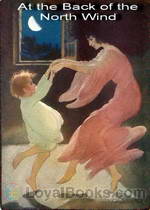 At the Back of the North Wind
At the Back of the North Wind
Written by the man who mentored Lewis Carroll and encouraged him to submit Alice for publication, At the Back of the North Wind is today a forgotten classic of Victorian children's literature. The story tells of a young boy named Diamond, the son of a coachman in an English country mansion. Diamond sleeps in the hayloft above the stables and at night he finds he's disturbed by the wind blowing through the holes in the wall. He tries to plug them but one night, he hears an imperious voice scolding him for doing this! It is the magnificent North Wind that speaks to him and tells him that he's closed up her windows... | |
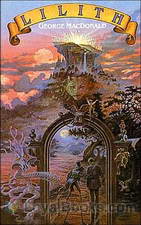 Lilith
Lilith
A fantasy novel first published in 1895, Lilith follows a young man on his inter-dimensional journey of spiritual discovery, as he acquaints himself with his family’s past and unearths a life-changing secret. Moreover, it deals with the introspection of its protagonist, as he is hurled into a mysterious setting where he encounters bizarre creatures that challenge the validity of his temporal values. Examining issues including the essence of life, wisdom, death, redemption, and salvation, the novel presents a masterfully woven plot that marks the piece as one of MacDonald’s darkest and most intense contributions to the fantasy genre... | |
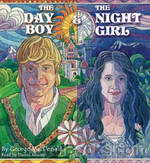 The Day Boy and the Night Girl
The Day Boy and the Night Girl
First appearing in Harper’s Young People as a serial, the piece focuses on the extraordinary tale of a young boy and a girl who have been brought up in a secluded and controlled environment by a wicked witch, incognizant of the world outside of their custom tailored settings. Enriched with magic, fantasy, romance, and allegory, The Day Boy and the Night Girl is a great instance of MacDonald’s excellent use of metaphors to express a deeper meaning to a seemingly simple fairy tale. The novel begins with the introduction of Watho, a wicked witch who has an insatiable thirst for knowledge... | |
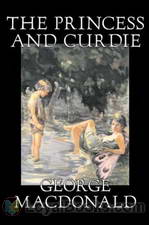 The Princess and Curdie
The Princess and Curdie
The Princess and Curdie is the sequel to The Princess and the Goblin by George MacDonald. It’s been a year since the Princess Irene and Curdie first met, and a year since the goblin incident and all appears to be going well in the Kingdom. Or is it? After a visit from Irene’s great-great-grandmother, Curdie finds himself on a mission to save the kingdom, with a rather strange companion in tow. | |
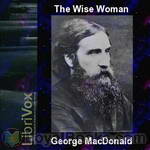 The Wise Woman
The Wise Woman
George MacDonald was an influential Scottish author, poet, and Christian minister. MacDonald’s works (particularly his fairy tales and fantasy novels) claimed the admiration of such authors as J. R. R. Tolkien, C. S. Lewis, and Madeleine L’Engle. The Wise Woman fairy tale was one of MacDonald’s more popular works. This delightful story describes how a woman of mysterious powers pays visits to two very different young girls: one a princess, the other a shepherd’s daughter. Neither girl is left unchanged by the startling events that are unleashed as a result: and the reader is confronted by astonishing fairy-worlds in which the girls are forced to choose between good and evil... | |
 The Shadows
The Shadows
“Old Ralph Rinkelmann made his living by comic sketches, and all but lost it again by tragic poems. So he was just the man to be chosen king of the fairies…” George MacDonald (December 10, 1824 – September 18, 1905) was a Scottish author, poet, and Christian minister. Though no longer well known, his works (particularly his fairy tales and fantasy novels) have inspired admiration in such notables as W. H. Auden, J. R. R. Tolkien, and Madeleine L’Engle. The Shadows is one such fairy tale... | |
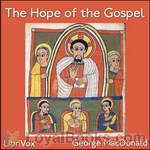 The Hope of the Gospel
The Hope of the Gospel
Perhaps most well-known for his fairytales and fantasy stories such as The Golden Key and Phantastes, or for his poetry, George MacDonald was a great spiritual master of the nineteenth century. He spent several years as a minister in his native Scotland; however he was forced to resign his position due to ill health. He had a profound influence on such later writers as G. K. Chesterton and C. S. Lewis – the latter of whom considered MacDonald to be his spiritual father, and edited an anthology of his works... | |
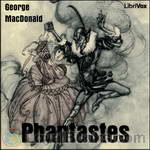 Phantastes
Phantastes
A young man named Anodos experiences dream-like adventures in Fairy Land, where he meets tree-spirits, endures the presence of the overwhelming shadow, journeys to the palace of the fairy queen, and searches for the spirit of the earth. The story conveys a profound sadness and a poignant longing for death. (Brad Powers) | |